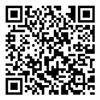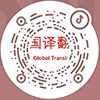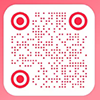Specific Solutions
Manual Translation into English: Where Accuracy, Clarity, and Usability Must Align
— By Airui Translation
In global trade, product exports, technical services, international tenders, and user operations, an English-translated manual isn’t just a linguistic accessory — it’s a functional, legal, and professional document.
From machinery and medical devices to electronics, training kits, and installation guides, manual translation into English requires far more than language proficiency. It demands deep understanding of industry standards, documentation formats, and user expectations.
At Airui Translation, we specialize in technical content translation, and here’s how we approach manual translation for global use.
What Types of Manuals Typically Require English Translation?
Common categories include:
User Manuals
Operation Guides
Installation Manuals
Maintenance & Service Manuals
Safety Instructions
Technical Specifications
Training Materials
After-Sales Instructions
These documents are often submitted for customs clearance, compliance audits, customer onboarding, project handovers, or product certification — meaning they must be error-free, professionally formatted, and clearly understood by international users.
Key Requirements for English Manual Translation
✅ 1. Consistent and Industry-Accurate Terminology
Terminology must follow established standards, not ad hoc translations. For example:
| Chinese Term | English Equivalent |
|---|---|
| 电源开关 | Power switch |
| 输出电压 | Output voltage |
| 故障排除 | Troubleshooting |
| 安全警告 | Safety warning |
| 安装步骤 | Installation steps |
| 定期维护 | Routine maintenance |
A lack of consistency can lead to misuse, technical errors, or customer complaints.
✅ 2. Clear, Concise, and Logical Language
English manuals favor direct sentence structures, often in the imperative or passive voice:
“Press and hold the Start button for 3 seconds.”
“Ensure the system is properly grounded.”
“The unit must be installed in a dry environment.”
Long, redundant Chinese sentences must be carefully restructured into readable English — not just translated word for word.
✅ 3. Layout, Figures, and Tables Must Be Recreated
Manuals typically include:
Flowcharts
Tables
Diagrams and parts labels
Numbered procedures
Professional translation involves format restoration, ensuring translated text aligns perfectly with visuals and structure — often in editable Word, InDesign, or PDF formats.
✅ 4. Compliance with International Standards
Manuals accompanying exported goods may be subject to:
CE, UL, or ISO documentation requirements
Safety labeling guidelines
Country-specific phrasing (British vs. American English, metric vs. imperial units)
A good translation partner understands how language, compliance, and usability intersect.
What Sets Airui Translation Apart in Manual Translation?
With extensive experience serving industrial manufacturers, exporters, and technical teams, Airui Translation offers:


















